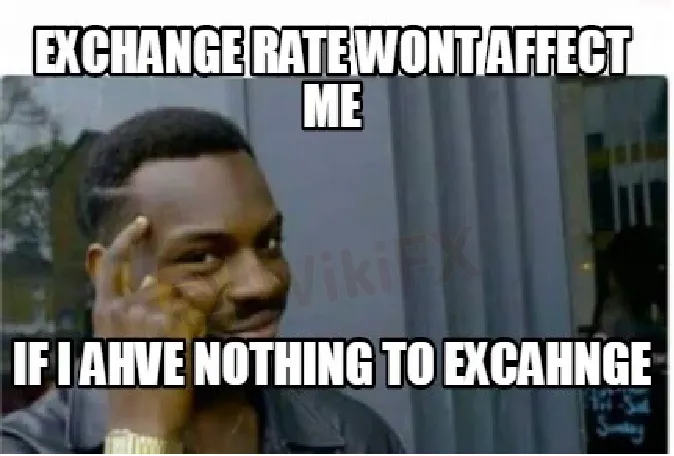简体中文
繁體中文
English
Pусский
日本語
ภาษาไทย
Tiếng Việt
Bahasa Indonesia
Español
हिन्दी
Filippiiniläinen
Français
Deutsch
Português
Türkçe
한국어
العربية
How to Read Foreign Exchange Rates?
Abstract:Reading foreign exchange rates can be confusing when you don’t know what the terms and numbers mean. What is a currency pair? What’s the difference between the bid and ask price? These are some of the questions you can only answer when you can read foreign exchange rates the right

Learning the language of forex is a must if you want to be a successful trader. Its easier to strategize, experiment, and arrive at an informed decision when you fully understand the concepts surrounding foreign exchange.
Read on to know the most important terms that will help you decode charts when you check forex live rates at your most trusted forex website.
Currency Pair

Currencies are quoted in a pair because you will need to sell a currency to buy another or vice versa. Therefore, a currency paircompares the value of one currency against another one and shows how much of the quoted currency is needed to buy one unit of the base currency.
The currency on the left (EUR) is the base currency, while the one on the right (USD) is the quoted currency. The base currency is always fixed at one unit, while the quoted currency is the equivalence of one base unit when traded into the other currency.
Using the sample quote above, you will need to sell US$1.1339 to buy €1.00. On the other hand, you will get €1.00 when you sell your US$1.1339.
Direct Currency Quote vs Indirect Currency Quote
There are two types of a currency quote – direct and indirect. A direct currency quote is where a domestic currency is the quoted currency. Here, the domestic currency varies while the foreign currency remains fixed at one unit. With indirect currency quote, the domestic currency is fixed at one unit while the foreign currency is treated as the variable.
Cross Currency
Some currency quotes do not have a U.S. dollar in the pair. This is called a cross currency, and this allows one foreign currency to be traded for another without the need to exchange the currency into U.S. dollars.
Cross currency pairs give you more trading options, but the caveat here is that these pairs are not as popular as the ones that involve the U.S. dollar.
Here are samples of cross-currency:

Bid and Ask
When you start trading currencies, its important to know which price you must look at. There are two concepts here—the bid price and the Ask price. Simply put, Bid is the buy price while ask is the Sell price.
If you want to buy a currency, you must look at the Ask price. This gives you the amount of quoted currency that you need to pay to buy one unit of the base currency in the pair. On the other hand, the bid price is the one you check when selling units of the base currency. It gives you the amount which the market will pay for the quoted currency in the pair.
The more you know about forex, the better you can trade. Have a constant thirst for new knowledge about forex to expand your trading skill set such as decoding forex live rates. You have several forex websites and blogs to access a huge amount of information and data that can help expand what you know about forex. Remember, a successful trader does not stop learning.

Disclaimer:
The views in this article only represent the author's personal views, and do not constitute investment advice on this platform. This platform does not guarantee the accuracy, completeness and timeliness of the information in the article, and will not be liable for any loss caused by the use of or reliance on the information in the article.
Read more

What Impact Does Japan’s Positive Output Gap Have on the Yen?
The Japanese government has announced that, due to a tight labor market, the country’s economic output is expected to return to full capacity in the next fiscal year for the first time in seven years.

WikiFX Review: Is Ultima Markets Legit?
Ultima Markets has played a significant role in the forex trading industry for decades. WikiFX created a comprehensive review to help you better understand this broker. We will analyze its reliability based on specific information, regulations, etc. Let’s get into it.

WikiFX Review: Is FXTRADING.com still reliable?
FXTRADING.com is an online brokerage firm that offers trading services for various financial instruments such as forex, cryptocurrencies, shares, commodities, spot metals, energies, and indices. WikiFX has comprehensively reviewed this broker by analyzing its regulations, specific information, etc. so that you have a deep understanding of this broker.

Financial Educator “Spark Liang” Involved in an Investment Scam?!
A 54-year-old foreign woman lost her life savings of RM175,000 to an online investment scam that promised high returns within a short timeframe. The scam was orchestrated through a Facebook page named "Spark Liang."
WikiFX Broker
Latest News
Why is there so much exposure against PrimeX Capital?
Russia to Fully Ban Crypto Mining in 10 Regions Starting January 1, 2025
Two Californians Indicted for $22 Million Crypto and NFT Fraud
WikiFX Review: Is Ultima Markets Legit?
Colorado Duo Accused of $8M Investment Fraud Scheme
What Impact Does Japan’s Positive Output Gap Have on the Yen?
Malaysia Pioneers Zakat Payments with Cryptocurrencies
FCA's Warning to Brokers: Don't Ignore!
SEC Warns on Advance Fee Loan Scams in the Philippines
OFX: Is It Good to Go? Broker Review
Currency Calculator


